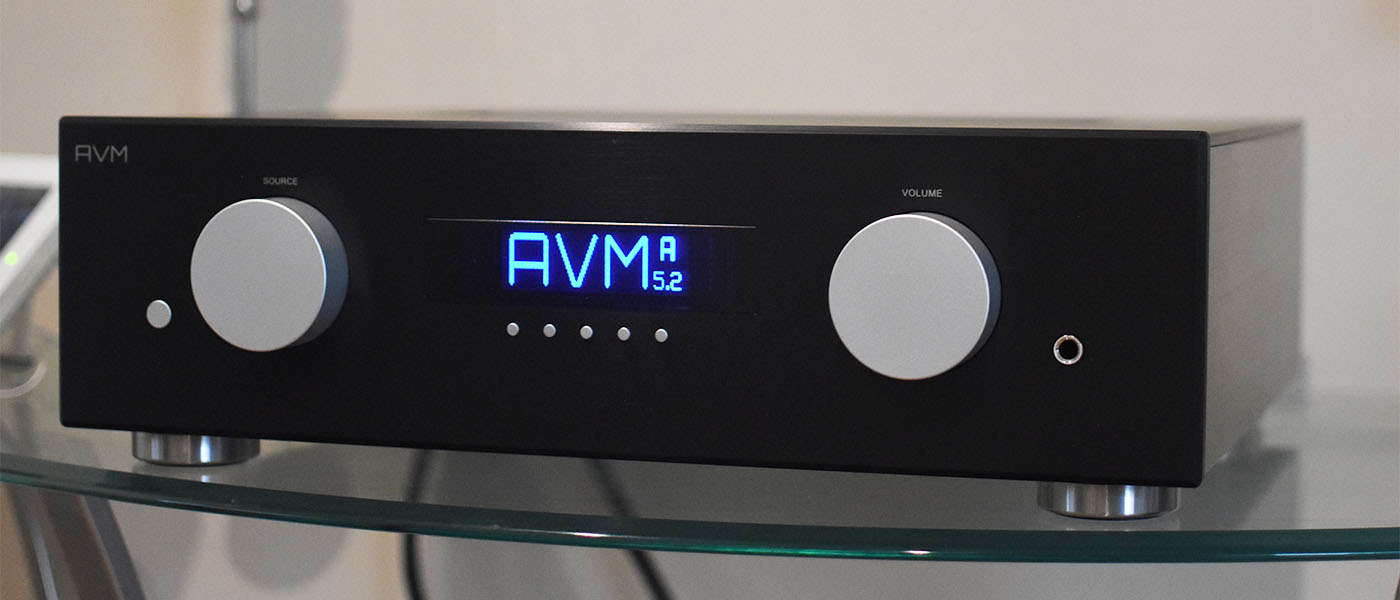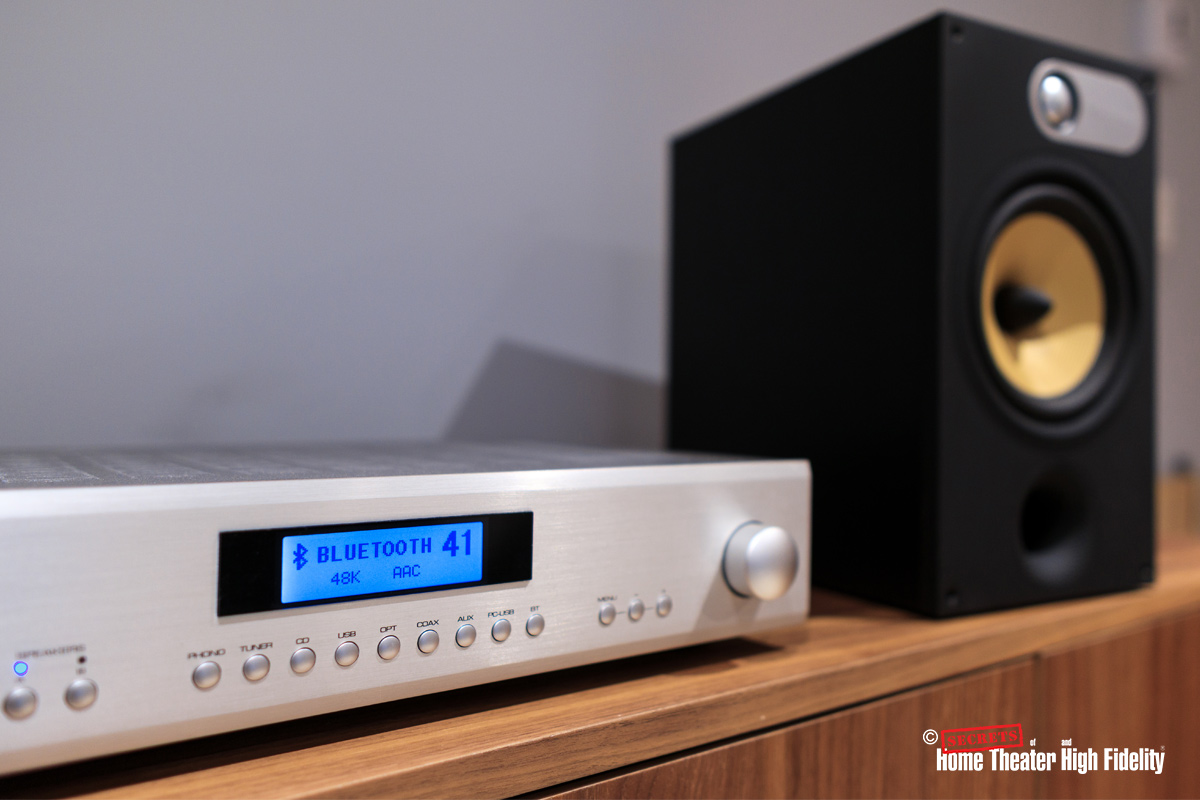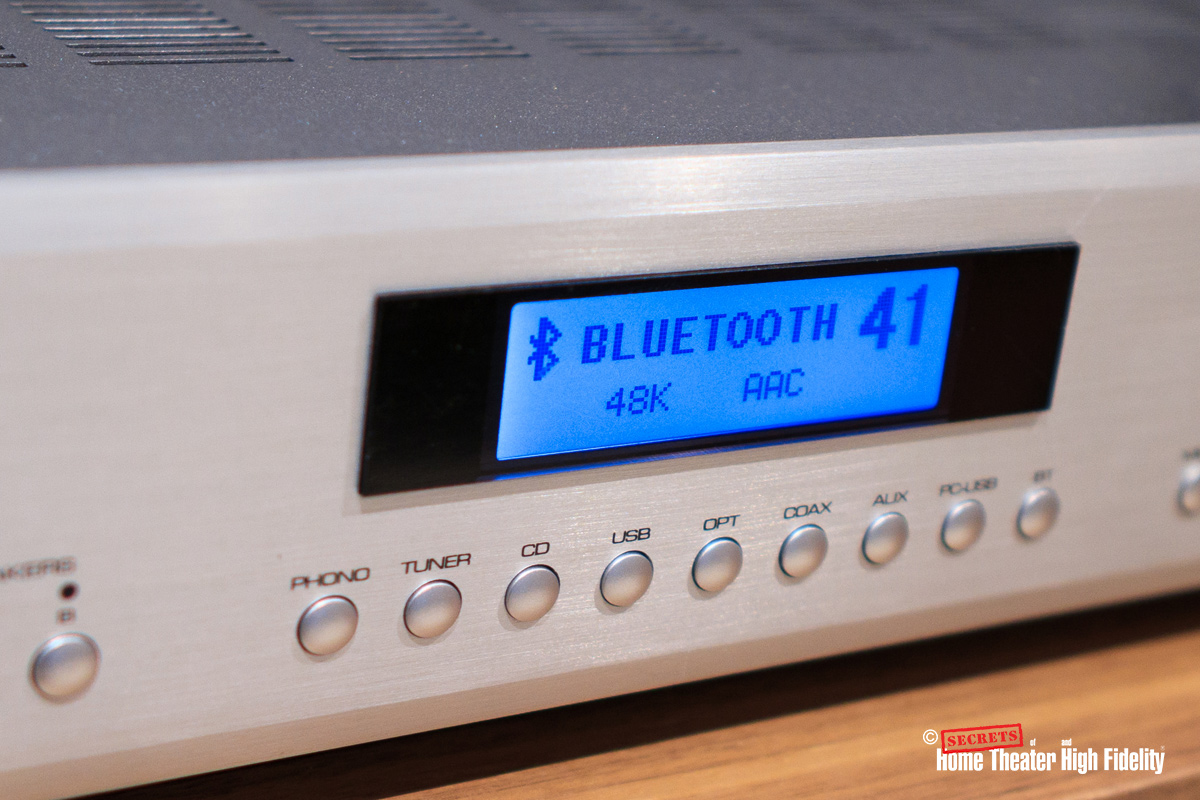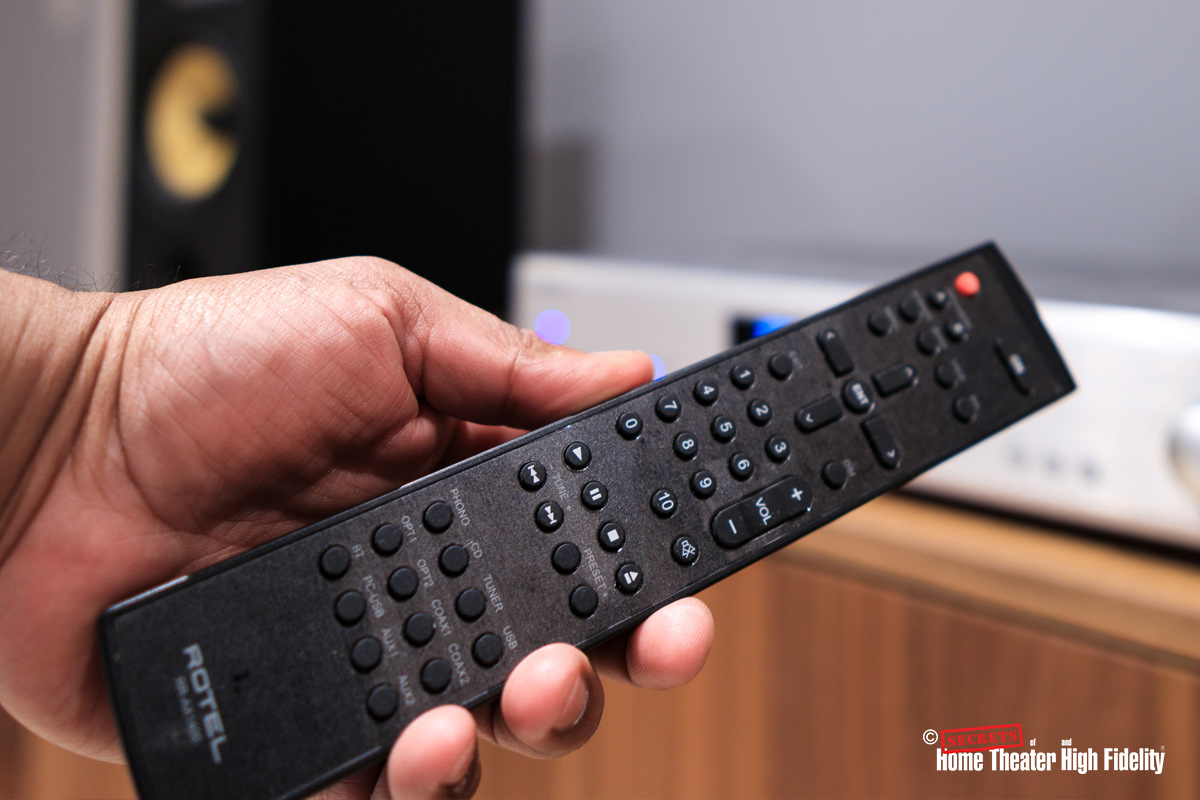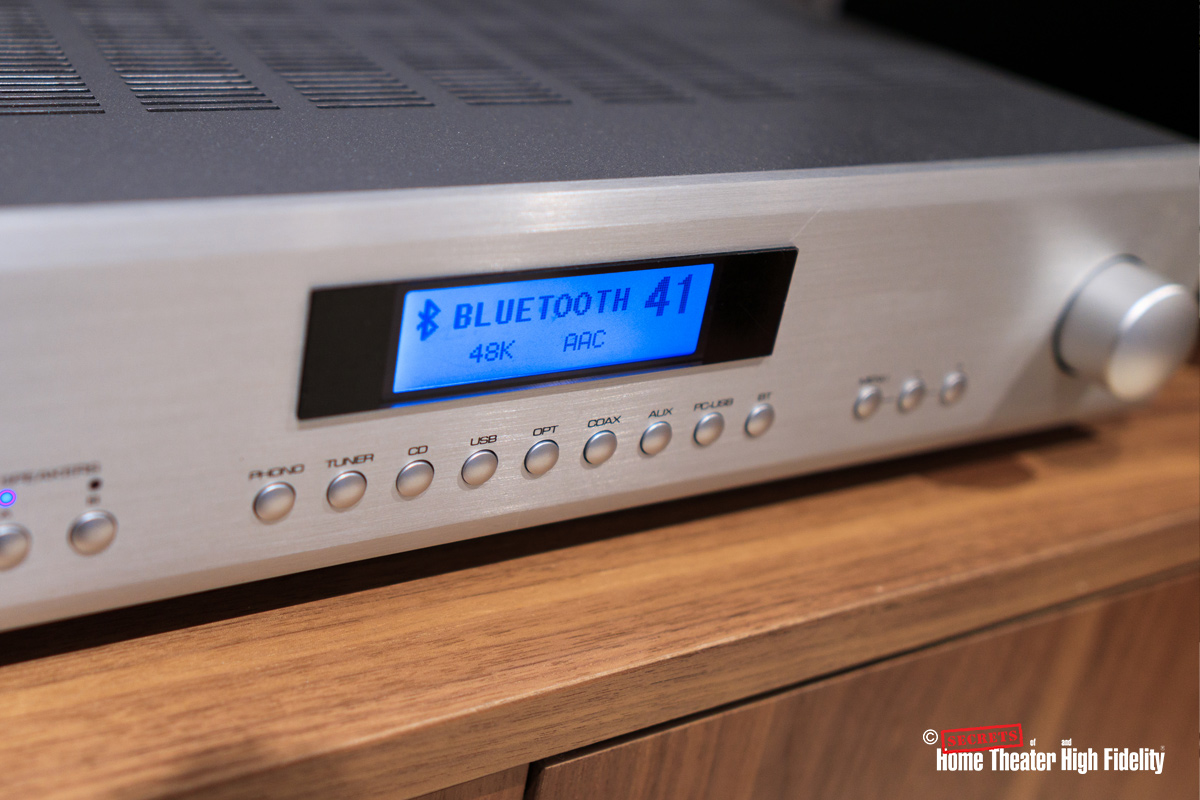On the chopping block, so to speak, is the Rotel A14 MkII. Rotel is a brand that has eluded me so far in my hi-fi adventures. I had always heard about them and have even lusted after their 1582 MKII power amp for no other reason than I love the way it looks in silver. So pretty. Though, I haven’t heard the 1582 MkII mind you, but had seen Rotel amps paired with Bowers and Wilkins gear in product lifestyle shoots in the past—and being a bit of a B&W fanboy—I was ready to jump at the chance to give one a listen. It goes without saying then that I was more than happy to take delivery of Rotel’s refreshed A14 MKII integrated amplifier for a review.
Refreshed being the keyword, MkII means that it’s not a complete overhaul of the design but that some key features and components have been upgraded. The upgrades include circuit design innovations and component-level changes in key circuit locations, leveraging design elements from Rotel’s higher-end Michi Series.
Rotel A14MKII Integrated Amplifier
- Moving magnet phono input
- Upgraded internals
- Inputs can be fixed and variable
- Wireless aptX and Bluetooth
- Roon Certified and tested
- Supports MQA and MQA Studio
- 32-bit/384kHz DAC
As with my other reviews from this summer, I was in-between homes and at our cottage for most of it. And as such the reviews were somewhat hindered. Our family had to pack up the majority of our home and put it into storage and bring what we could fit into my Kia Rio Hatch and my wife’s Tesla Model 3 out to our cottage. As such, I was limited in what stereo equipment I could bring up. Turntables were out, as was vinyl. The CD transport and subwoofer got nixed too. But what I managed to bring up was enough. My B&W 685 s1 speakers, NAD 326BEE integrated amp, and Cambridge Audio DAC Magic 200M (review coming soon!). Knowing that the Rotel A14 MKII was on the way, I felt like I had enough to do a basic comparison and test out some great digital music. But alas, testing out the phono stage wouldn’t happen this time around.
Our cottage is on the smaller side. Cozy, but not the best place to visually showcase an amplifier of the Rotel’s caliber. My setup would have to be tucked away into a corner and brought out for listening sessions. Listening at high volumes for long periods wasn’t going to happen either as our cottage doesn’t really have the space. I gave it the old college try mind you but all I succeeded in doing was damaging my hearing and knocking things off shelves.
Secrets Sponsor
The benefit of our cottage is that it’s quiet. I mean, I knew that it was quiet, but I didn’t realize how quiet it was until I started reviewing the Rotel A14 MkII. Compared to our former home in the city, there was a lack of noise pollution. Construction, cars, people talking (or yelling in our old neighborhood). Making listening much more insightful and subtleties more apparent. It got me thinking of a future renovation of our cottage to make room for a proper listening area.
Maximum Power Output:
150 watts/ch (4 ohms)
Continuous Power Output:
80 watts/ch (8 ohms)
Total Harmonic Distortion:
< 0.018%
Intermodulation Distortion (60Hz : 7kHz, 4:1):
< 0.03%
Frequency Response:
Phono Input: 20Hz – 20kHz (0-± 0.5dB)
Line Level Inputs: 10Hz – 100kHz (0-± 0.5dB)
Damping Factor (20Hz – 20kHz, 8 ohms):
220
Input Sensitivity / Impedance:
Phono Input: 3.4mV / 47k Ohms
Line Level Inputs: 230mV / 24k Ohms
Input Overload:
Phono Input: 50mV
Line Level Inputs: 4V
Preamp Output / Impedance:
1.2V / 470 Ohms
Tone Controls – Bass / Treble:
± 10dB at 100Hz / 10kHz
Signal to Noise Ratio (“A” weighting):
Phono Input: 90dB
Line Level Inputs: 100dB
DIGITAL SECTION
Frequency Response:
10Hz – 90kHz (0-± 2.0dB, Max)
Signal to Noise Ratio (IHF “A” weighted):
103dB
Input Sensitivity/Impedance:
dBfs / 75 Ohms
Preamplifier Output Level:
1. V (at -20dB)
Digital Inputs:
SPDIF LPCM (up to 24-bit / 192kHz)
PC-USB:
USB Audio Class 1.0 (up to 24-bit / 96kHz)
USB Audio Class 2.0 (up to 32-bit / 384kHz)
MQA and MQA Studio (up to 24-bit / 384kHz)
GENERAL
Power Requirements:
Europe 230V, 50Hz
USA 120V, 60Hz
Power Consumption:
280 watts
Standby Power Consumption:
< 0.5 watts
BTU (4 ohms, 1/8 power):
632 BTU/h
Dimensions (W x H x D):
430 x 93 x 34.5 mm
17 x 3 5/8 x 13 1/2 in
Front Panel Height:
80mm, 3 1/8in
Weight (net):
8.94kg, 19.71lbs
Price:
$1,600
Website:
Company:
SECRETS Tags:
Rotel, a14 mkii, integrated amplifier, amplifier, stereo
The A14 MkII boasts 80 Watts per channel of Class AB amplification into 8 Ohms and 150 Watts into 4 Ohms. Much like NAD, Rotel has a habit of under-quoting the power of its components so I can only assume that the A14 MkII follows suit and is more powerful than it claims to be.
The new A14 MkII upgrades include a new Texas Instruments DAC supporting 32-bit, 384kHz audio complemented by 25 component changes in the DAC output filters. Power supply component changes were also implemented leveraging design strategies from Rotel’s Tribute models. Additional circuit changes in the signal path circuits provide a richer and fuller audio performance with an even more lifelike reproduction of the original performance.
It’s a slimline design as far as amplifiers go. The Rotel A14 MkII is low profile, at 17″W × 3.6″H × 13.5″D. Depending on the height of the legs of your TV set, you could potentially fit the Rotel underneath if you were short on space. The TV at our cottage is small so I placed the A14 MkII next to it on our sideboard.
The Rotel A14 MkII has a sturdy all-metal chassis available in black or silver. You’re greeted by no fewer than 15 buttons on the front panel, which (starting from the left) include a power button, a USB input, a headphone jack, speaker A/B selection, source selection, three buttons for menu navigation, and a volume knob. Both the power button LED and front status display are user dimmable. And the volume knob is a 96-step control. I didn’t make it past 63, as I value my hearing.
Around the back, the connectivity and functionality become apparent. I don’t know anyone who has that much gear to connect to an integrated amplifier. Usually, it’s a turntable, a computer, a CD player and maybe a TV. There’s a lot of inputs to play with here. Five analog, four digital, the aforementioned PC-USB, with MQA decoding and rendering, aptX AAC Bluetooth for wireless streaming, a network input, a front panel headphone socket, USB charging, and a moving-magnet phono stage. It also features Ethernet and RS-232 connections for control system integration, and dual, A-B five-way speaker binding posts that allow for Zone 2 installations. Add to this intelligent power control, Audio-Direct Tone Bypass mode, and Roon certification. It’s as fully featured as it gets.
Something I completely missed in my reviewing process (but was alerted to later), was that the variable/ fixed inputs selection makes the A14 MkII a great addition to a hybrid Home Theater setup. Setting an input to ‘Fixed’ essentially enables a ‘Home Theater Bypass’ mode, whereby the A14 MkII would power the front speakers of my home theater set up while also acting as the go-to amp for two-channel listening. Given the robust power supply on hand, I would have loved to try this out now that I have moved into my new space. Maybe next time!
The A14 MkII feels like Rotel has prioritized ease of use over aesthetics. It’s a clean and workman-like design. Everything you need is at your fingertips. Whether you decide to access functions via the buttons on the front panel, or the buttons on the remote, it’s easy to access and tweak to your heart’s content. The design would have been considered futuristic a decade or two ago. Now, it’s more classic-modern than modern. It’s not unattractive per se but, it is neither overly striking nor lust-worthy. The display on the front panel echoes this sentiment as it’s functional but dated and not befitting an amplifier at this price point. I inquired about a possible chassis redesign and I received the usual ‘We’re proud of our products and we have no plans for a redesign at this time’ response. But after seeing the gorgeous industrial design of Rotel’s Michi series I have hope that a cosmetic refresh is in the works. As mentioned before, I love the appearance of the 1582 MkII amplifier, it’s far more streamlined (being a power amplifier) with only one physical button on the front, but the elegant design still holds up to this day. If I compare the A14 MkII to the Cambridge Audio CXA61, it looks dated and loses the shelf appeal battle. But compared to my trusty NAD 326bee it looks decidedly modern.
Navigating the menus is a bit of a pain. The front display helps with this though. There are menus and sub-menus which require a bit of time to go through, but once I made my adjustments, I was able to ‘set it and forget it’ for the most part.
Secrets Sponsor
For a company that does so much of its design in-house, the remote is a letdown. It’s extensive with 50 buttons and controls everything that the A14 MkII can do, but man, it’s no looker. It’s not backlit and it doesn’t physically compliment the amp at all.
Any of my gripes over the physical appearance of the Rotel completely disappear when I start listening to music. I did most of my listening via the USB connection, that connects my Macbook Pro via my Dell Monitor acting as a hub. There was one blip when I connected the Cambridge DacMagic 200M. The AUX input defaulted to a fixed signal and would not change to variable no matter how many times I tried to change it. It only happened with the AUX input; when I tried a different input, I didn’t have the same issue, and I couldn’t replicate the issue with my NAD 326bee either. An email from Rotel theorized that another reviewer must have set the input as Fixed and that a factory reset could be done to reset the input.
I also took the liberty of dimming the power button and display as much as possible. I’m not a fan of lights and LEDs on audio gear so I’m happy to be able to turn them down or off when I can.
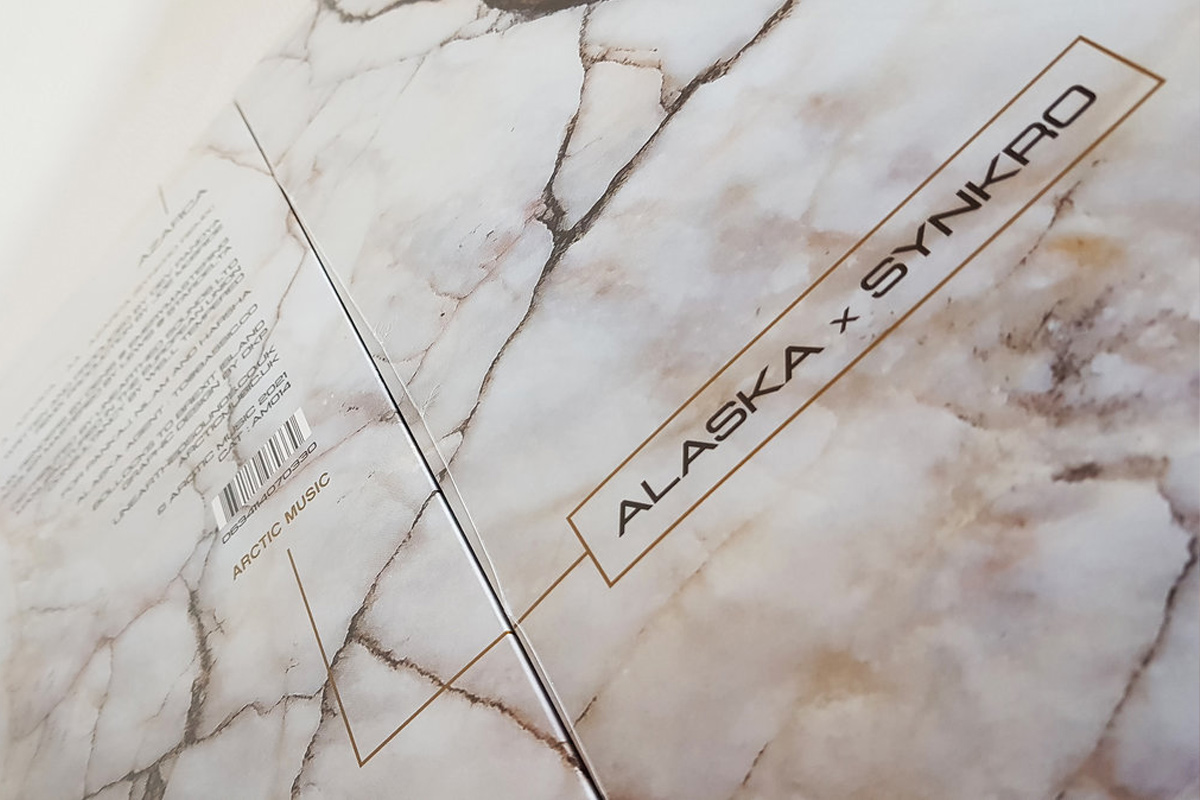
Alaska – Azarca
One tune. Two artists. And two completely different sounding pieces of music. While not technically released yet, I have been happily streaming this from Soundcloud and enjoying it that way until I can purchase it for myself. And you’d better believe that I’m picking up the vinyl. If I was forced to pick, the Alaska (Paradox) version is my favorite of the two, but they are both outstanding. The trademark Paradox drum edits are in fine form and are complemented by some airy atmosphere and tight bass. The Synkro Remix offers a more lush, rounded sound with stripped-back beats. I found the Rotel A14 MkII excelled with the more musical D&B like this through my B&W 685’s. There was a lot of oomph and weight to the music and the bass without anything sounding clinical and overly bright. I took the liberty of augmenting the tone via the bass and treble controls. The A14 MkII has +10dB for each, the bass bumps up around 100Hz, so I was easily able to dial in my preference.

ASC – Fatal Error
Along the same lines is this wall of sound from ASC. The stand-out track of the ‘An Exact Science’ EP. Add this to the long list of music that I wish I could create. Holy smokes. It’s a look back into the Golden age of Drum and Bass sound while propelling it into the present. It starts simply enough with a simple break and atmosphere then slowly builds and builds. The oomph of the Rotel is on full display as it effortlessly delivers the music to you without strain and seemingly more to give. Even at high volumes—high to the point that you have to leave the house and listen outside on the deck—the Rotel A14 MkII is rock solid albeit a little harsh. At lower volumes, the music loses any hint of harshness, held its weight, the highs were clear, and the bass was taut. The slimline chassis is deceiving. In a good way. If you were to judge the Rotel’s power by its looks, you would think it isn’t overly powerful. But on the contrary, it sounds like my Cambridge Audio CXA61 and my NAD 326bee had a muscular baby. The sound in my smallish space is big and powerful. It still manages to be refined and detailed, but at first listen, it’s a wallop. I imagine it would shine in a medium to large room too paired with a good pair of floorstanders. My new home is perfect for that (I’m bragging a little) and I wish I had the opportunity to test that out. Maybe a 1582 MkII is available?
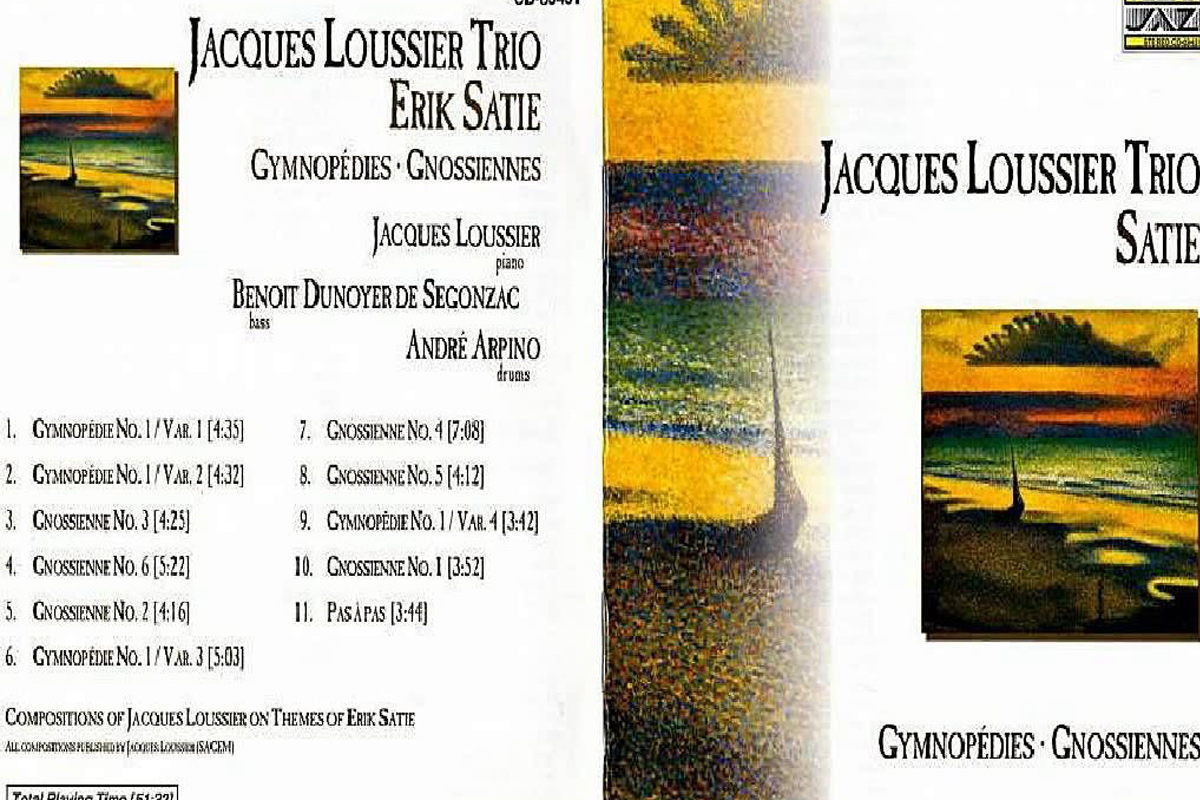
Jacques Louisser Trio – Satie: Gymnopedie No.1/ Var.3
Don’t ask me how to pronounce the name of this track. We listen to a lot of mellow jazz in the morning and evening for one main purpose – to get our hooligan kids to settle down and eat. It works for the most part. In the mornings it reminds my wife and me of intimate pancake breakfasts at the Mercer Kitchen in Soho. This song exemplifies that feeling. It isn’t all just prettiness, there’s a nice bit of bass that helps underpin the song and drive it forward. The subtleties aren’t lost on the A14 MkII. There is a lot of detail, even at more modest volumes and the soundstage is enveloping and wide. This amp is something special.
Switching to Bluetooth and streaming via my iPhone yielded good results. The drop in sound quality isn’t overtly noticeable in my setup. And the sound was just as wide and detailed as I heard via USB.
Aside from my B&W’s I would pair the likes of the Q Acoustics 3030i Bookshelves, 3050i Floorstanders, Monitor Audio Silver 2, and kef Q350’s with the A14 MkII and be very happy with the setup. I’m sure you could pair higher-end speakers as well; I just haven’t had the opportunity to hear them for myself.
Despite a dated look, the Rotel A14 MkII Integrated Amplifier delivers where it counts with a big sound and spacious dynamics. It’s a great stereo amp for the price.
- Big and muscular, yet refined sound
- Extensive connectivity
- Rock-solid Bluetooth
- Dimmable displays and lights
- Updated cosmetic design
- Better display
- A remote more befitting of the amp
The Rotel A14 MKII is a capable amplifier. And it’s a good choice for someone looking for an amplifier with a bit more juice than is typically available at the entry level. The extensive connectivity and functionality allow it to fit into a wide variety of set-ups and configurations. The build quality is top-notch as well, I expected no less from Rotel and was not disappointed.
In all, the Rotel A14MKII is a great integrated amplifier. It’s powerful, neutral, and musical. The extensive connection set and feature list will keep you happy for years to come. Aesthetically, well… you’ll be the ultimate judge of that as it will be your choice in the end. But if looks don’t matter to you and all you care about is great sound then the Rotel A14 MKII deserves listening to.


